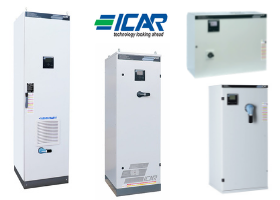What is reactive energy?

Reactive energy – a part of the complex (full) power of sinusoidal voltage and current, which is necessary for the generation of the magnetic field of some specific equipment and is an integral part of the technological process in the production, transmission and distribution of electricity;
Economic benefits of installing reactive power (energy) compensation equipment
According to the “Electricity Trade and Use Regulations”:
No. 65. When using the system services provided by the system operator, the user is obliged to: pay for the consumed reactive energy, if tg φ is greater than 0.4 (power factor cos φ <0.929), in accordance with the fee 0.004 EUR / kVArh – for users whose electrical equipment is connected at least for a voltage of six kilovolts with a permitted load of 100 kilowatts or more, or for other users with an input protection device current of 200 amps or more;
No. 67. The user is prohibited from transferring reactive energy to the network of the system operator. If the system operator detects the transfer of reactive energy to the system, users whose electrical equipment is connected to a voltage of at least six kilovolts with a permitted load of 100 kilowatts or more or other users with an input protection device of 200 amps or more shall pay for all reactive energy costs 0.013 EUR / kVArh.
When installing a reactive power compensation device, the charge for reactive energy is reduced to a minimum (a few euros per month) or completely eliminated from the electricity bill.
In almost 100% of cases, the payback period for equipment installation costs is 2 years or less.
Technical benefits
Reactive power compensation reduces “wasteful” current in the user’s power lines and other elements of the power supply system, resulting in:
- it is possible to install smaller power equipment (transformers, switching apparatus, cables with a smaller cross-section);
- the voltage drop in the supply lines is reduced
- reduced losses in cables, other elements of the power supply system
- reduced heat-induced aging of power supply system elements
- improved voltage quality – reduced steep and voltage distortion (THD)